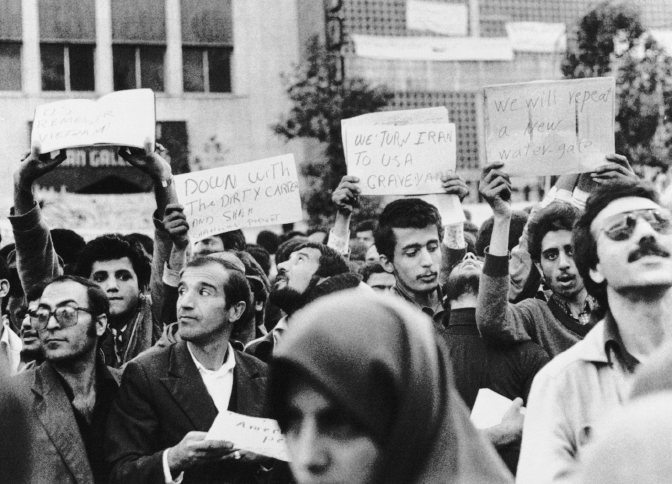Sources for America’s History: Printed Page 748
| P8-6 | | America’s Crisis in Iran |
| Demonstrators Supporting Captors of U.S. Embassy Hostages March on the Besieged Compound (1979) |
In 1953, the United States helped topple Iranian prime minister Mohammad Mossadegh, installing the pro-U.S. shah of Iran in his place. Despite his autocratic rule, the United States supported the shah for decades until he was deposed during the 1979 Iranian Revolution, which brought Ayatollah Khomeini back from exile. Relations with the United States rapidly deteriorated, culminating in the Iranian seizure of the U.S. embassy in Tehran on November 4, 1979, where fifty-two Americans were held hostage for more than a year. This image shows the embassy compound with Iranian demonstrators holding anti-American signs.

READING AND DISCUSSION QUESTIONS
Question
Analyze the photograph taken one week following the seizure of the U.S. embassy in the Iranian capital of Tehran. What is the significance of the signs Iranian protesters are holding?
Question
From the Iranian hostage crisis, what can you conclude about the Cold War history of America’s foreign policy? How did America’s economic and military involvement in the Middle East impact U.S. foreign policy goals and the country’s relationship with Iran?
Question
What effect do you think the hostage crisis had on domestic affairs within the United States?